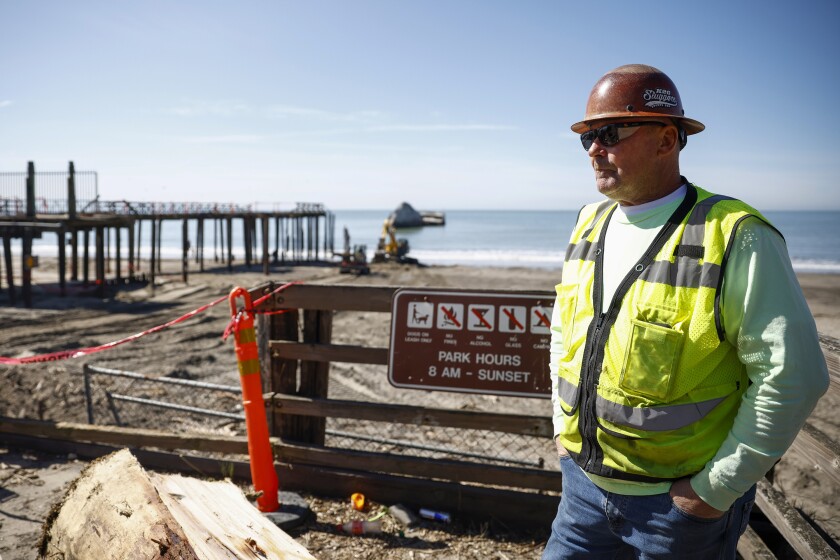This more or less describes how the U.S. is approaching the growing flood threat posed by a warmer atmosphere that holds more water, subjecting the country to bouts of torrential, catastrophic rainfall. Lives are being lost and property destroyed partly because we’re moving too slowly to embrace proven solutions to bolster our infrastructure against disasters that are becoming increasingly routine.
Last week in Vermont and New York’s Hudson Valley, months’ worth of rain fell in hours, overwhelming antiquated water-management infrastructure, resulting in widespread flooding that took at least one life and wiped out roads, bridges, houses and more. Both places had experienced severe flooding before and had taken modest steps to avoid it. Those efforts proved woefully inadequate.
Usually when most of us think of the flood risk posed by climate change, we picture hurricanes and rising oceans. But a warmer planet also means more moisture in the air far from coasts. According to thermodynamics, for every 1 degree Celsius the atmosphere warms, it holds 7 percent more water vapor. The planet has already warmed 1.2C above pre-industrial averages, and we’re on track to add at least 2 more degrees on top of that.
This extra moisture often gets dumped out of the atmosphere in torrential downpours. Climate change was directly responsible for $75 billion in flood damages in the U.S. between 1988 and 2017, according to a 2021 study. That number is certainly higher now and could well rise exponentially in the near future.
It’s notable that Vermont was unlucky enough to bear the brunt of this effect last week. The state is often mentioned as a potential haven from climate change, author Jonathan Mingle wrote in theNew York Times. As I have written, we keep learning the hard way that there are no climate refuges. You can be hundreds of miles from a wildfire and still choke on its smoke. And when climate hypercharges rain clouds, you don’t even have to live near a river to experience flooding. “Localized” flooding, when so much water falls at once that drainage systems can’t handle it, is becoming as big a problem as the riverine variety.
So every part of the country must be ready for deluges. Unfortunately, most of our infrastructure has been designed to withstand rainfall projections by the National Oceanic and Atmospheric Administration that are hopelessly obsolete. The NOAA’s models forecast rainfall using data from decades in the past, when climate change effects were minimal.
Thus the agency’s idea of a once-per-century flooding event now occurs far more frequently, according to a recent study by First Street Foundation, a private research firm.
The NOAA is trying to update its rain forecasts, but doesn’t expect to finish that job until 2027. We don’t have that kind of time. Billions of dollars are already being spent on infrastructure projects across the country, thanks to last year’s Infrastructure and Jobs Act, and most of the planning is based on the NOAA’s outdated projections. Nearly 13 million households now live in unrecognized flood zones and lack flood insurance, First Street estimates.
Every part of the country at risk of riverine and localized flooding needs urgent and significant upgrades to at least three key defenses, according to Alison Branco, climate adaptation director at the Nature Conservancy in New York:
• Culverts: The pipes that divert water under roads and bridges are often too small and old to handle modern, climate-fueled deluges.
• Wetlands and floodplains: These natural sponges along riverbanks and in low-lying areas keep floodwaters out of places where people travel and congregate. We have developed and paved over too many of them, giving water nowhere to go. Rain gardens, thirsty landscaping and permeable pavement can help in smaller spaces.
• Stormwater management: Everything from street drains to wastewater pumping stations needs to be supersized for the storms to come. Bridges should be redesigned to trap less debris and let water flow.
None of this will come cheap. New York Gov. Kathy Hochul recently pledged $516 million to replace 140 bridges and dozens of culverts, but that will leave thousands more in need of upgrade. Opening floodplains involves buying out homeowners. With Federal Emergency Management Agency assistance, Vermont has bought 154 homes since 2011. It may need to buy 10,000 more to be on the safe side, Bloomberg News suggests. And upgrading water-management systems may be the most astronomical cost of all; New York City alone may need to spend $100 billion on such a project.
But we can’t let the size of the challenge keep overwhelming our capacity to solve it. Policymakers at every level too often think in the short term, Branco argues, driven by a narrow focus on cost-benefit analysis and the harsh logic of politics. “Let Me Kick You Out of Your Waterfront Property” makes a terrible campaign slogan.
But the alternative is our current piecemeal approach, constantly cleaning up old messes and tinkering at the margins of a problem that grows bigger with every ton of carbon we pump into the atmosphere.
©2022 Bloomberg L.P. Distributed by Tribune Content Agency, LLC. Mark Gongloff is a Bloomberg Opinion editor and columnist covering climate change. A former managing editor of Fortune.com, he ran HuffPost’s business and technology coverage and was a reporter and editor for the Wall Street Journal.
This column does not necessarily reflect the opinion of the Bloomberg L.P. editorial board or Bloomberg LP and its owners. Governing's opinion columns reflect the views of their authors and not necessarily those of Governing's editors or management
Related Content













